Walking the last 20 yards into our bait site, John Rivet motioned to slow down; he stopped and then peeked into the clearing. Besides a few chickadees in the brush, the northern Alberta woods were quiet. “No bears,” he said, and we pushed on.
A 50-gallon barrel tethered to a 5-inch tree trunk lay on its side. Oats were spread from the container 20 feet in every direction, and a gnarled hunk of dead beaver hung 10 feet from the ground. That was the smell on the walk-in: pine needles and dead beaver. This was my bait for a 10-day hunt with the Rivets.
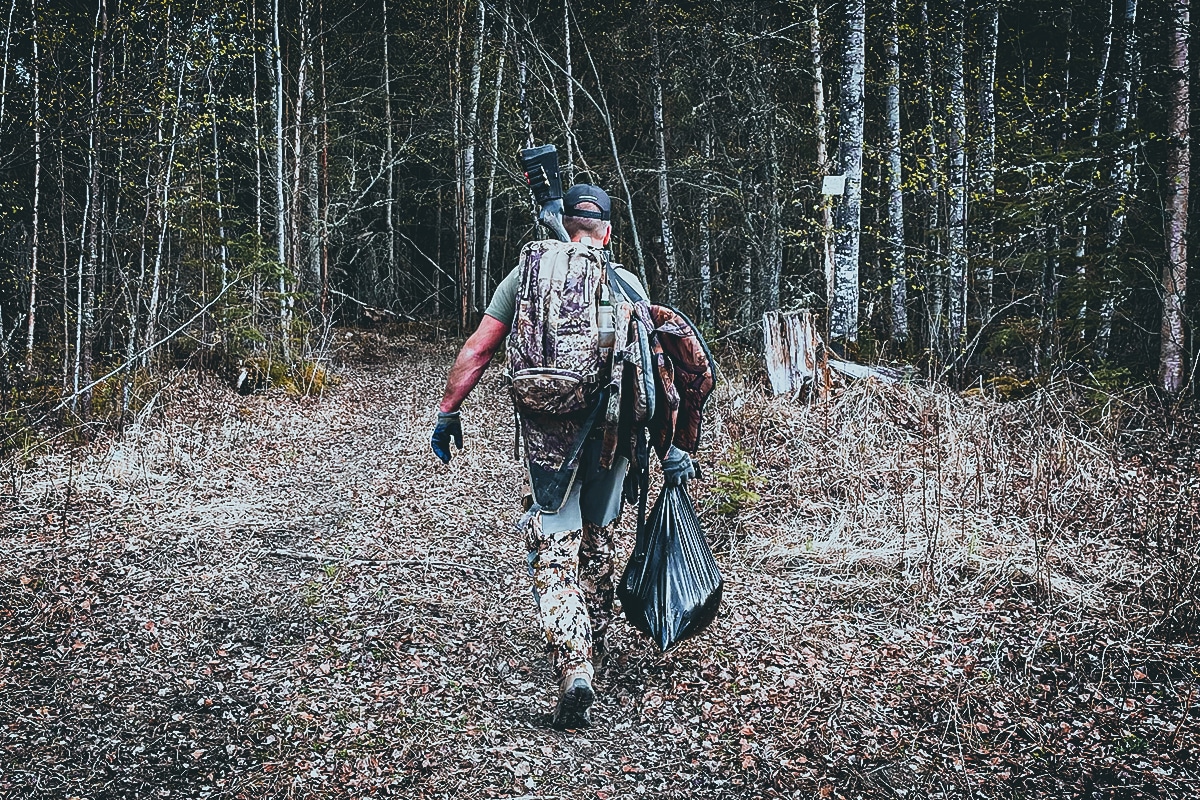
Bear baiting — using a food source to attract bears — is legal and highly regulated in northern Alberta. This spot is one of 65 bait sites that John, his wife Jenn, daughter Jenna, and son Jordan have set up across a roughly 1,960-square-mile expanse of public land.
Alberta is known for Pope & Young and Boone and Crockett black bears, and this is how most of them are taken. Yet, even with a proven track record of management success, the practice of bear baiting is still a polarizing subject among hunters and anti-hunters alike.
“There’s still plenty of oats in there,” John said as he righted the barrel.
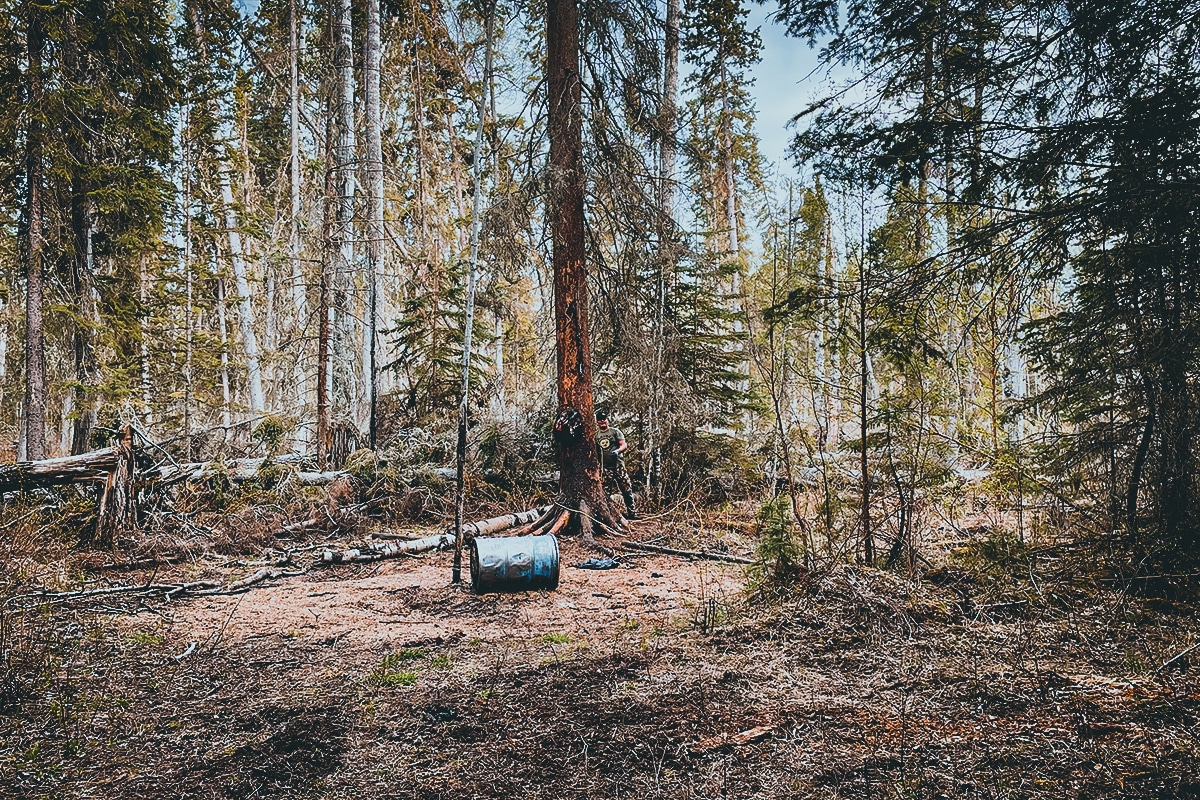
When he refills the barrels with oats, they also add used cooking oil; the oil keeps the dry oats from spilling out of the 3/8-inch holes drilled through the sides. This way, the bears have to work for their snack, and the barrels don’t empty as fast.
John turned to the beaver scrap, untied the rope from the tree, and secured it around a fresh, rotting beaver at its belly. Maggots spilled from the carcass as he hoisted it back to position 10 feet off the ground.
Like the oats, the bears also have to work for their beaver meat.
As for me, I set up 12 short yards away in a ladder stand, looking down at the big, dead rodent swinging from a tree.
Bear Baiting is a Win-Win-Win-Win
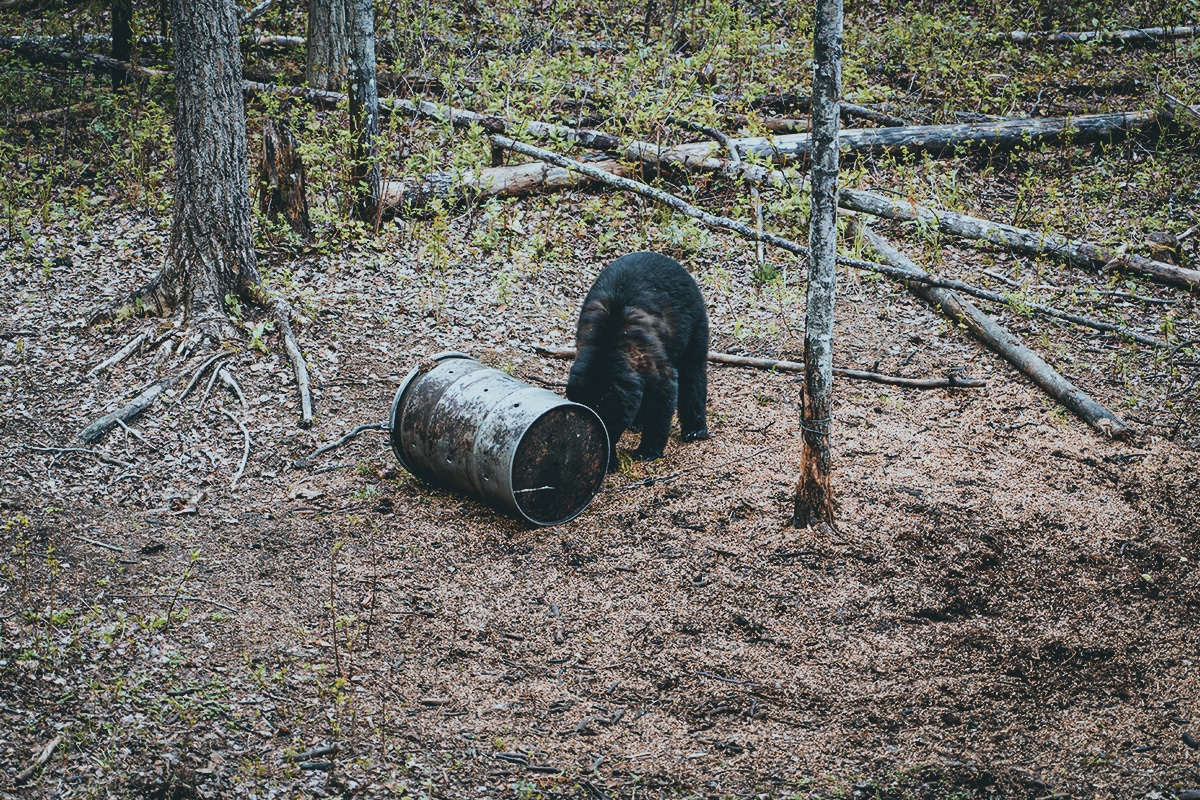
Bear baiting is a controversial tactic.
Of the 32 states where it’s legal to hunt black bears in the US, baiting is allowed in nine: Alaska, Arkansas, Idaho, Maine, Michigan, Minnesota, New Hampshire, Wisconsin, and Wyoming. In Utah, bait hunting is allowed for bowhunting only.
Baiting is allowed in seven Canadian provinces: Newfoundland, New Brunswick, Nova Scotia, Quebec, Manitoba, Saskatchewan, and Alberta.
Animal rights organizations and anti-hunters say it’s unethical, gives hunters an unfair advantage, and doesn’t follow the North American Model of Wildlife Conservation.
In 2014, Mainers For Fair Bear Hunting funded an $860,500 campaign against hunting bears over bait. The campaign vilified hunters for using the practice and the state for allowing it. Nothing came of the effort, and bear baiting continued.
A lawsuit filed in 2019 against the US Forest Service and US Fish and Wildlife Service sought to end black bear baiting in national forests based on the incidental killing of grizzlies, which are protected as an endangered species. A federal judge ruled that both agencies must reevaluate and revise regs according to Endangered Species Act criteria.
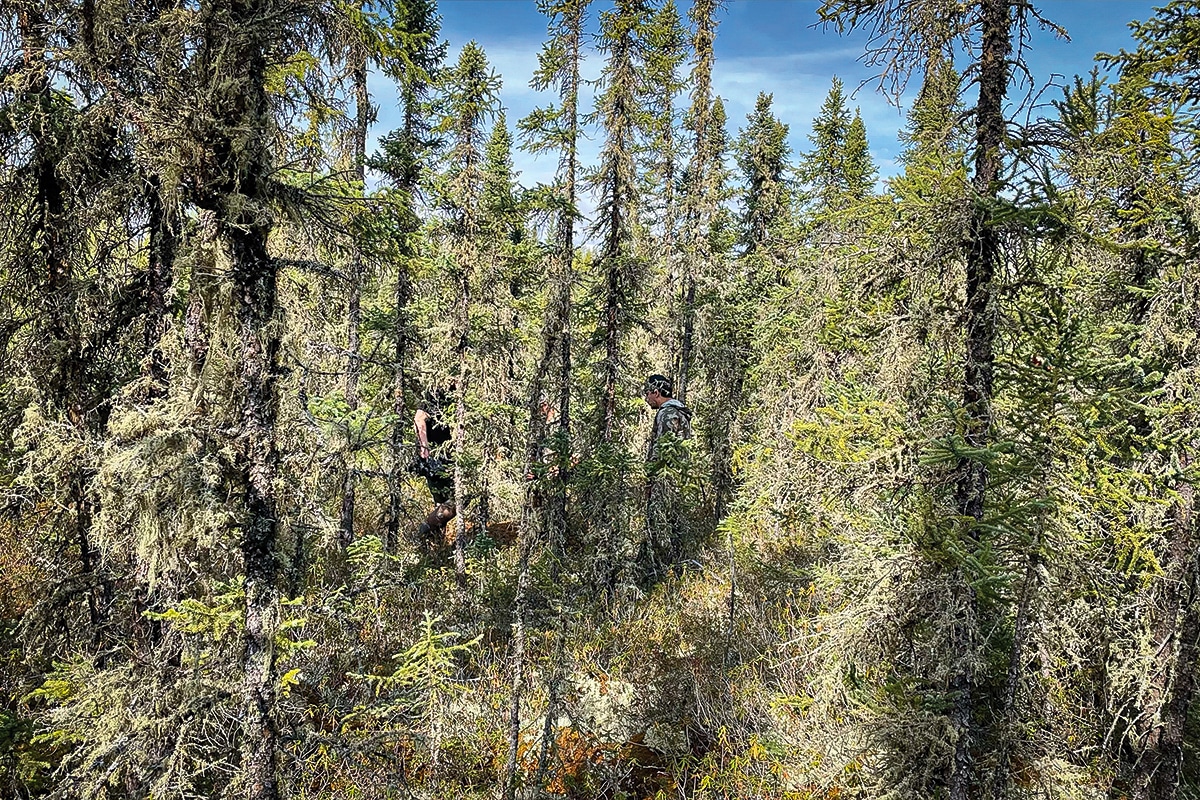
There is a disparity of opinion within the hunting community when it comes to bear baiting.
Some die-hard spot-and-stalk hunters call bear baiting a “lazy” way to hunt or consider it cheating. An opinion Jonny said is often held by those who have never experienced the work that goes into baiting.
As evidenced by the small list of states that allow bear baiting, wildlife officials like Tom Beck, a Colorado Division of Wildlife bear biologist, also have their doubts.
“I firmly believe that baiting creates ‘nuisance’ bears,” he said in an interview. “Black bears are naturally wary, instinctively avoiding close contact with humans. But a large amount of tasty food, easily obtained, defeats this wariness. By baiting, we create lazy bears who have been rewarded, not punished, for overcoming their fear of humans.”
In states and provinces where baiting is legal, hunters and wildlife officials understand that the practice is an effective predator management tool.
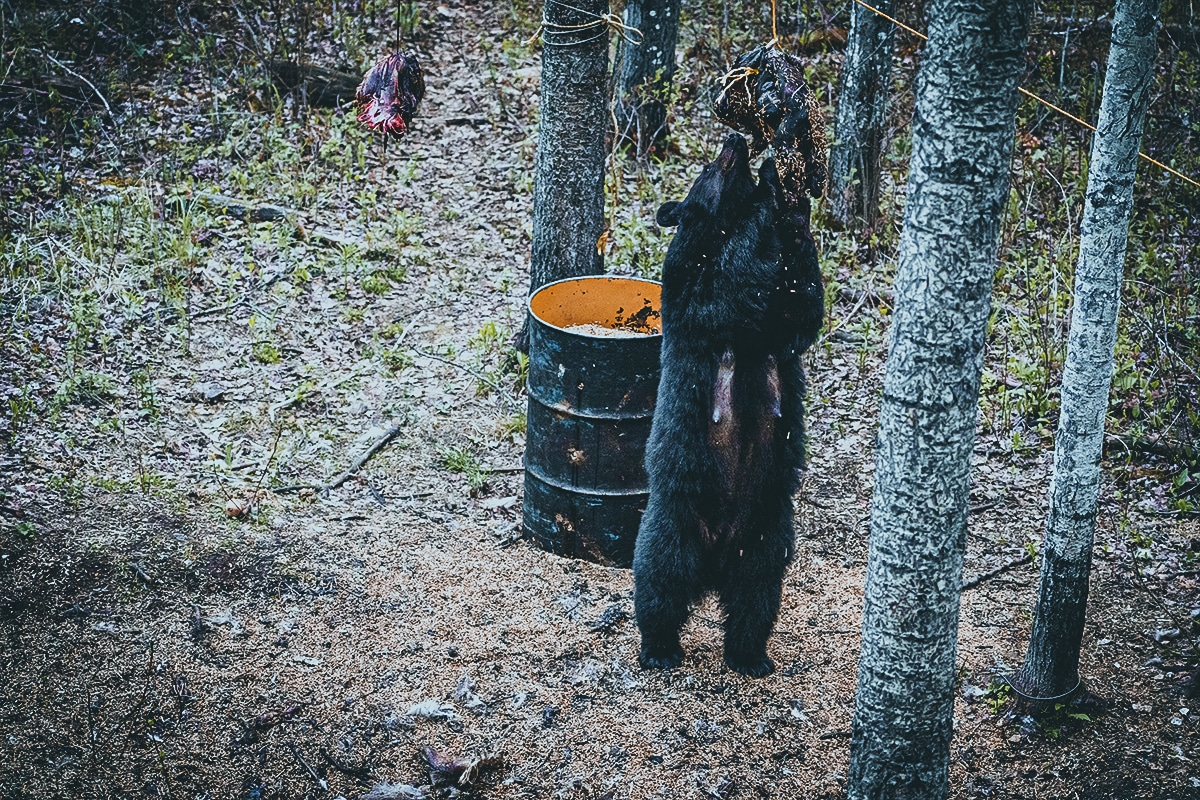
By current estimates, there are more than 900,000 black bears in North America. More than half are north of the 48th parallel.
According to John, Alberta legalized baiting when wildlife officials realized the voracious animals were overrunning them.
“Bear baiting started in Alberta in the mid-’80s,” he said. “Farmers would plant crops, even a 160-acre field of oats, and have 30 or 40 bears just destroy it. They would just roll and sleep in it and eat nonstop. They needed to get serious with bear hunting and control the bear population.”
With baiting available, outfitters could buy tags and claim rights to certain areas. Hunting tourism boomed, the overabundance of bears subsided, wildlife like moose, elk, and whitetails flourished, and agriculture rebounded.
John has guided hunters since he was 18 years old and has seen the effects of bear baiting as predator management firsthand.
“It saves a lot of moose,” he said. “Saves a lot of deer and elk that they predate on in the spring as they’re giving birth. They follow that animal, and when one calf or fawn drops, they grab it and go with it. That’s when they get most of them. If we’re managing ungulates — if we’re managing elk, managing moose — you’ve got to manage the predator.”
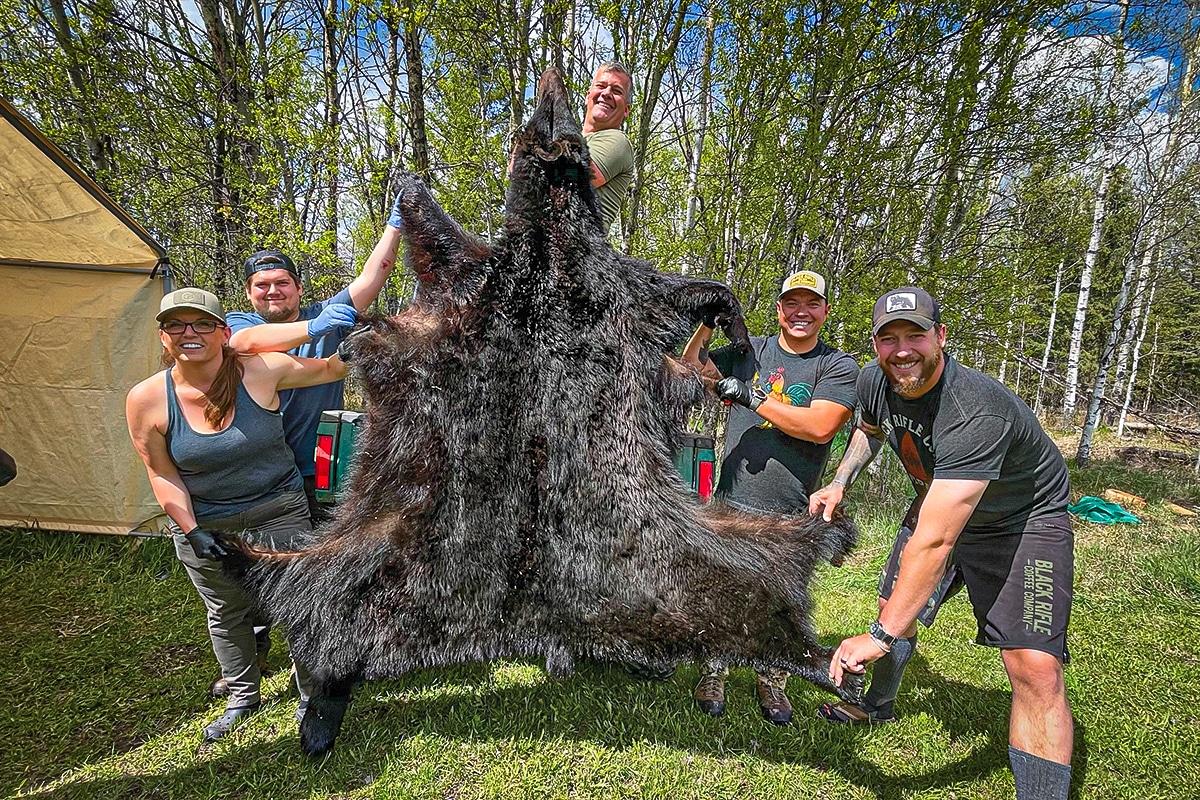
And it’s the big boars he wants most.
“We target boars because they’re the ones that go after those calves and fawns,” he said. “In areas where we hunt and target big boars, the moose population increases. So it’s great for the ungulates. They get a break.”
For Jenn Rivet, baiting also serves a critical management purpose in the fall when they’re not hunting bears.
“We bait to ensure that the sows go into the den healthy,” she said. “When they do, we have lots of nice offspring in the spring; some sows have anywhere from two to five cubs.”
“You’re playing the odds a little because the boars will eat cubs,” she added. “The more cubs the sow has, the better chance more will survive. That’s the conservation side of it. So much management goes into what we do because we want a healthy population.”
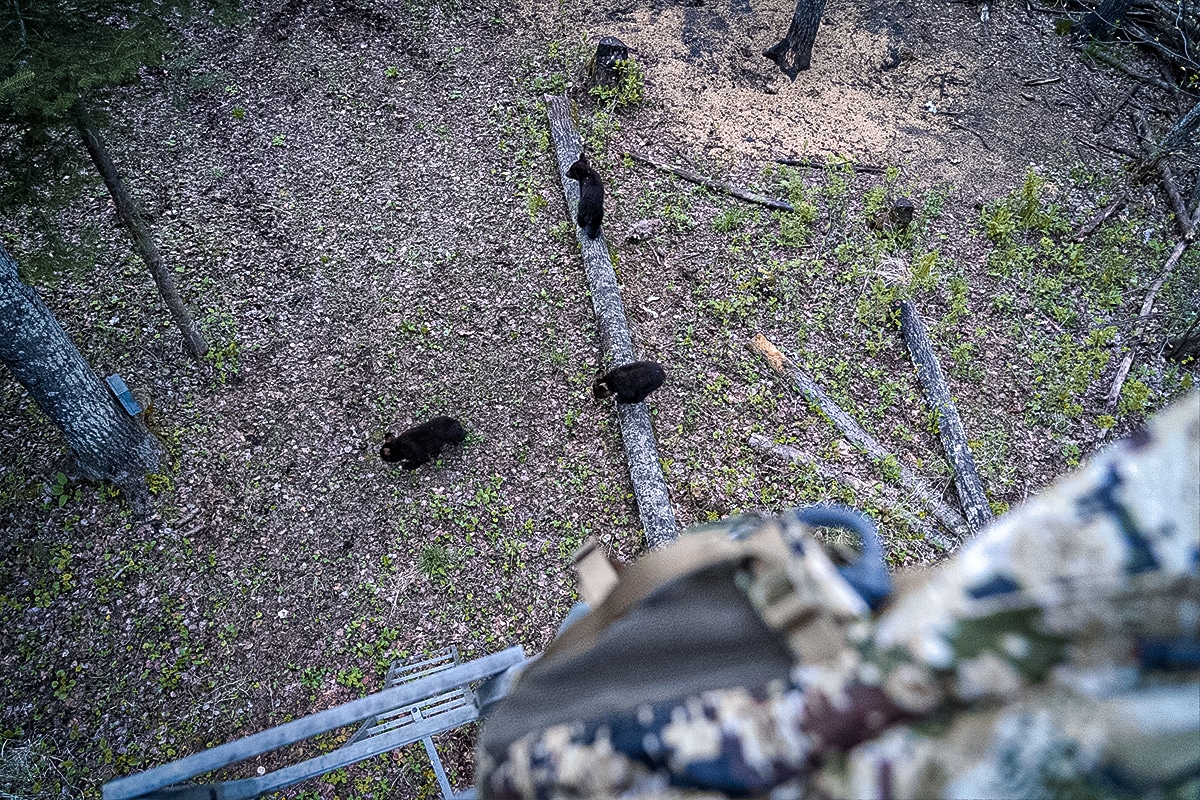
Doug Boze, a lifelong hunter and author of The Ultimate Guide to Hunting Black Bear, believes that legal baiting should be a point of agreement for hunters and non-hunters.
“The benefits of baiting are numerous for hunters and those against hunting,” he said. “When you put out a bait site and have bears coming in, you have a lot of time to sit and judge that animal. ‘Hey, this is a sow, this is a sow with cubs, or this is a mature boar.’”
“As bear hunters, our goal is to take mature boars,” he said. “We would rather leave younger sows, older sows, and especially sows with calves. We leave them alone, so the population continues to do well.”
Bear Baiting Is Not a Free Pass
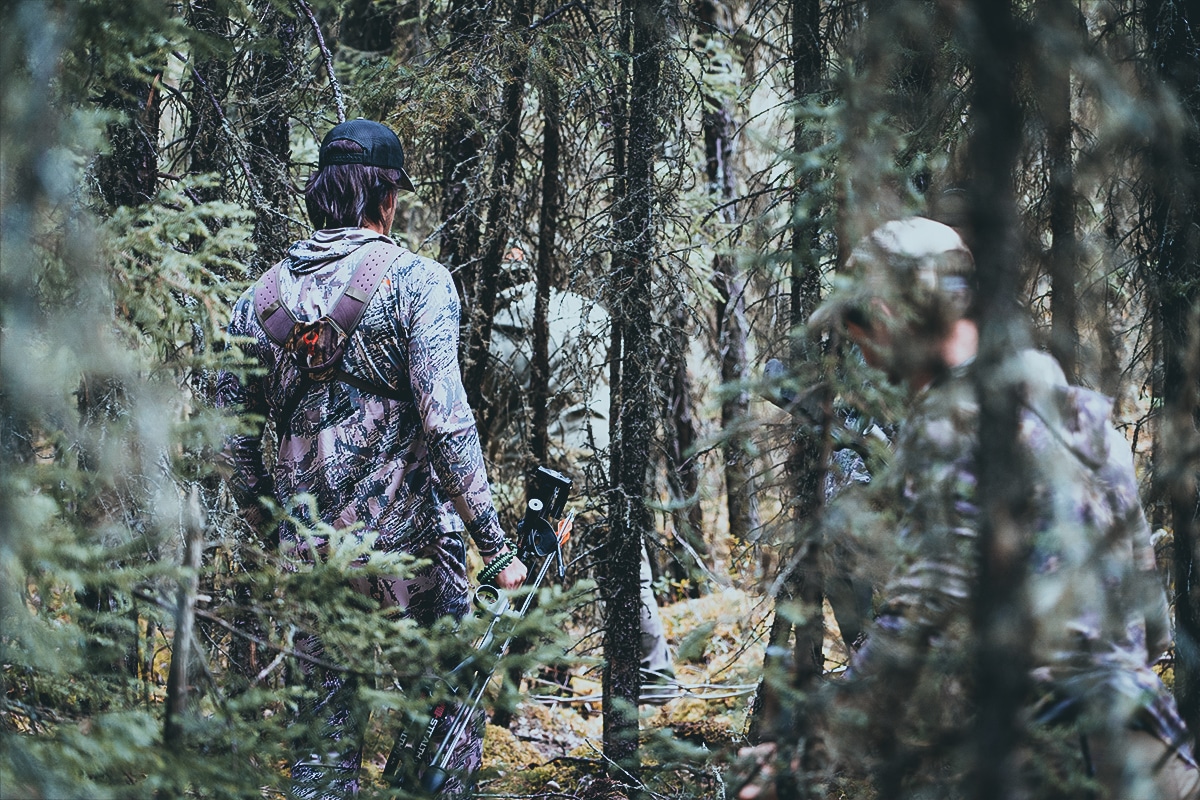
Before bear baiting became legal, John recalled relying on spot-and-stalk tactics.
“It’s so hard to kill bears here,” he said. “We don’t have big open areas like Montana or Idaho where you can glass a big hillside, find a bear, and shoot him with a rifle. Most of Alberta — where the bears live — is a boreal forest. It’s solid brush. You have to bait them to draw them out. Otherwise, you’re just getting a tiny window and shooting.”
And the forest is thick. Wander more than a dozen yards into the dense tamarack, brush, and pine, and visibility is limited to about 10 or 15 feet — that’s feet, not yards.
Baiting might bring bears in close for a shot, but it’s not as simple as throwing out a pile of food on your five acres and waiting. There are strict harvest and bait placement rules in place.
Regulations vary by state and province, but they generally dictate specific dates for the use of bait, whether sites need to be registered or permitted with the wildlife management office, appropriate signage for sites, allowable locations, and landowner permissions.
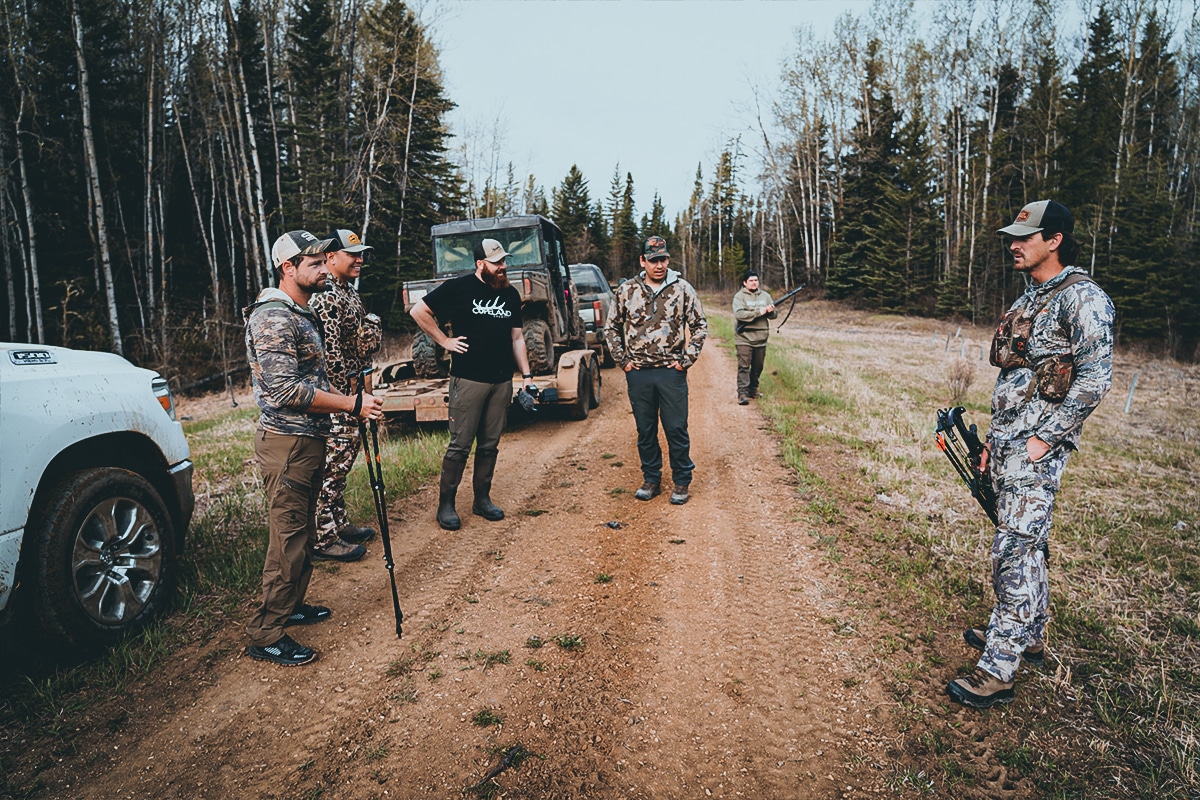
Alberta also keeps baiting out of known grizzly territory. Unlike black bears, grizzlies can be highly protective of food sources. Hunters approaching a bait claimed by a grizzly could face a deadly conflict.
The Rivets mark each site with a sign at the road with their name, wildlife identification number (WiN), big-game outfitter permit number, and phone number. They bait only during the open season and the preceding two weeks in their wildlife management unit (WMU).
Beyond the required regulations, harvest limits are also in place, which John said are determined based on annual surveys.
“There are wildlife biologists that count areas,” he said. “They figure out how many animals we have per unit and if that number is sustainable. Once they know how many can be harvested, they allocate tags.”
Feed Them What They Know
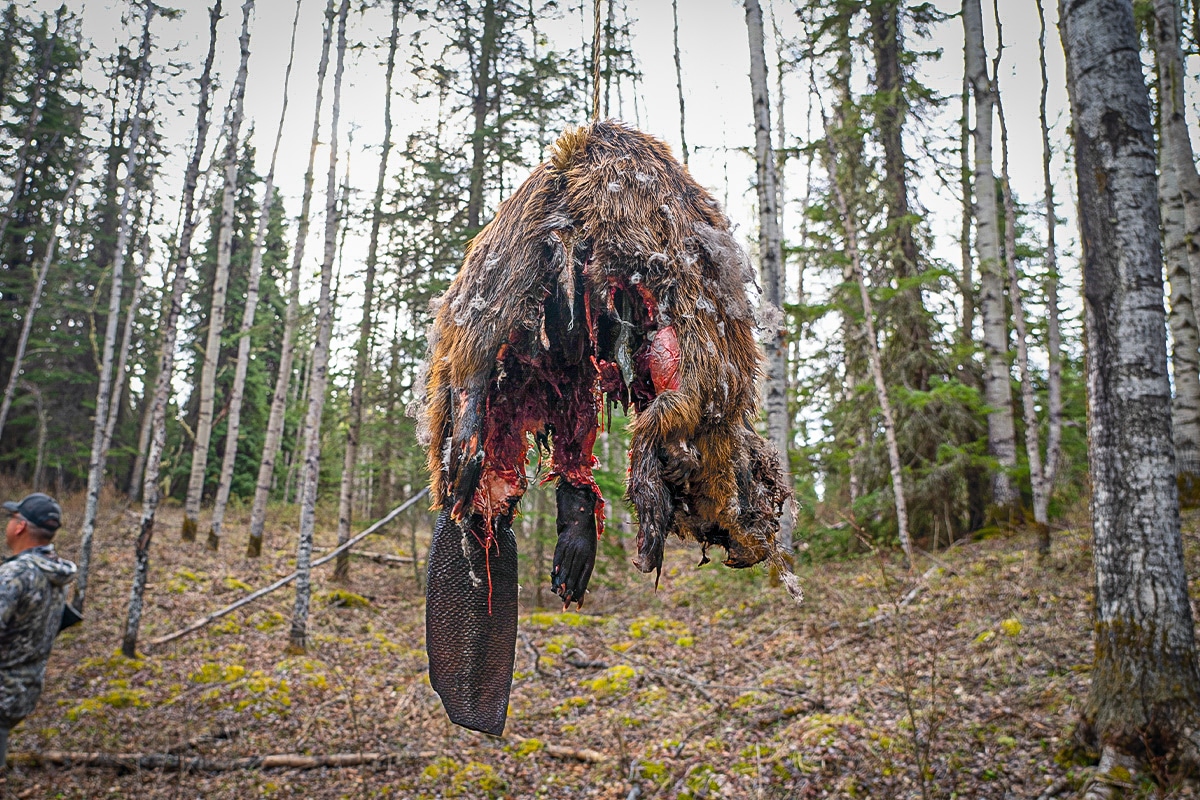
If you listen to anti-hunters, every bear bait is a heaping pile of donuts, popcorn, and white bread. These are cherry-picked instances at best.
When setting a bait, the Rivets stick to two staples: oats and beaver.
“They’re two things bears love to eat,” John said. “A farmer could plant a field of barley, a field of oats, and a field of wheat, and the bears will all target the oat field. Plus, it’s readily available to buy.”
A common anti-hunting argument is that bears become entirely reliant on the bait for sustenance, which John knows firsthand is not true.
“Even bears that frequented the bait daily are walking three miles or more to get to the bait,” he said. “We’ve opened up stomachs and found they’re eating everything along the way. One bear had two dozen little green frogs. They’re eating as they’re walking. They’re munching clover, grass, nice green little shoots. In July, they destroy every big anthill when the larvae are the largest.”
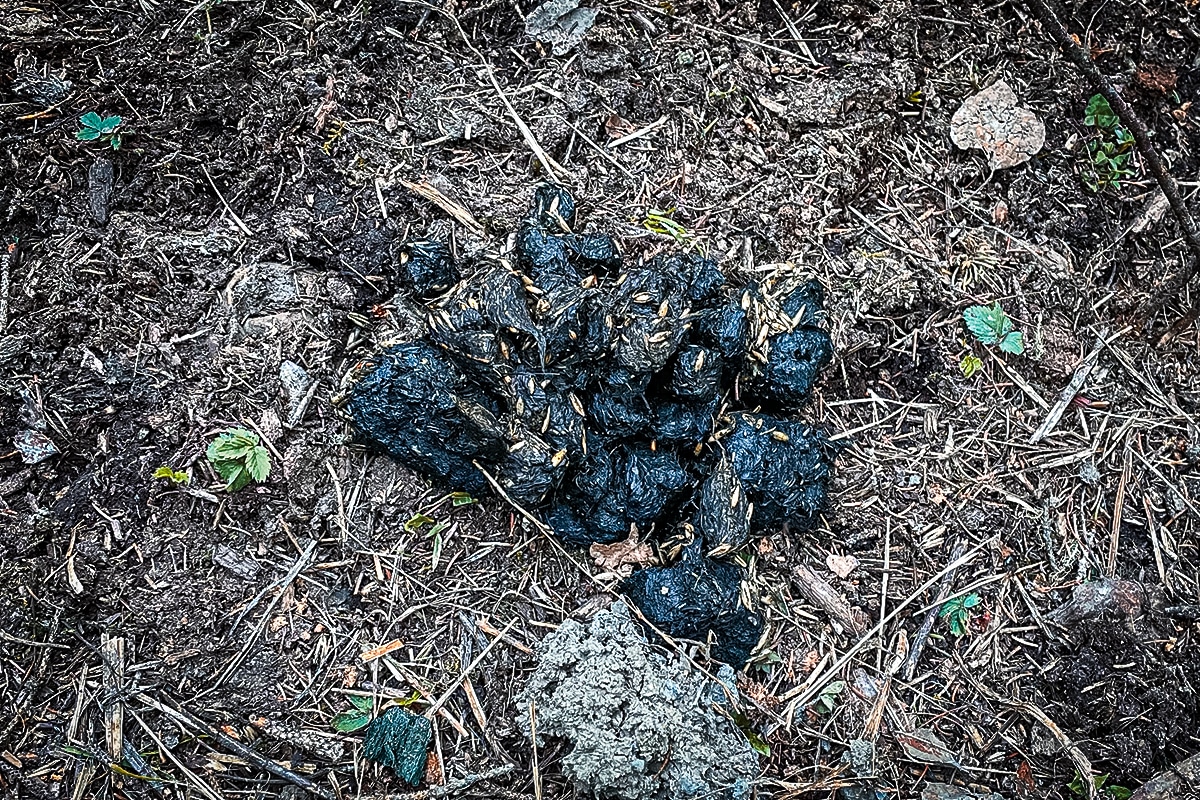
As for the beaver, they buy the rotting bodies in bulk from local trappers.
“There are beavers in every pond, creek, and stream around here,” John said. “It’s a natural food for bears. They’ll sit on the beaver runs, wait for them, pounce, and eat them.”
Jenn has a love-hate relationship with the bucktoothed rodents — and beaver jokes.
“We’ve been doing this for 30 years,” she smiled. “It’s a dirty, stinky job. But it works really well. As for the jokes, they’re a constant. But I roll with it and instigate some of it anyways. If you’re going to do something, you might as well have fun doing it. Everybody loves beaver. Especially Canadian beaver. Even the bears.”
With Bear Baiting, Selectivity Equals Results
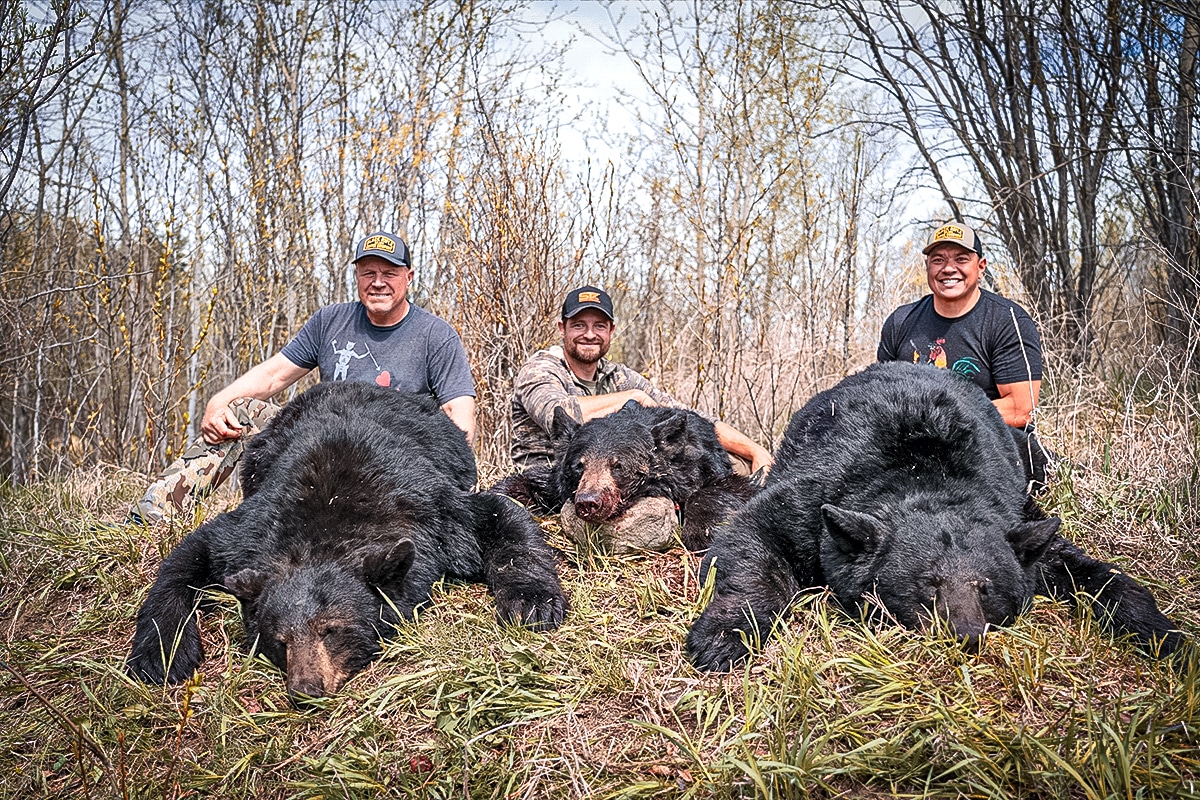
After a few hours in my stand watching red squirrels scrounge in the oats and listening to ravens volley back and forth as loud as artillery, I spotted a black shape in the brush 40 yards away.
Walking as silently as if it weren’t even there, the bear grew larger with each step it took toward the bait. It was alone, and it was cautious in its approach. It walked into the site, and the entire barrel disappeared behind its profile.
John mentioned on the first day of camp that a 7-foot bear’s back was roughly the height of the barrel.
A bear’s size is measured in two ways: its length in feet and the total size of its skull in inches. The length is measured from the end of the animal’s tail to the tip of its nose. Skull size is its maximum width plus the length. Skull size is the determining factor for P&Y or B&C record-book qualifications.
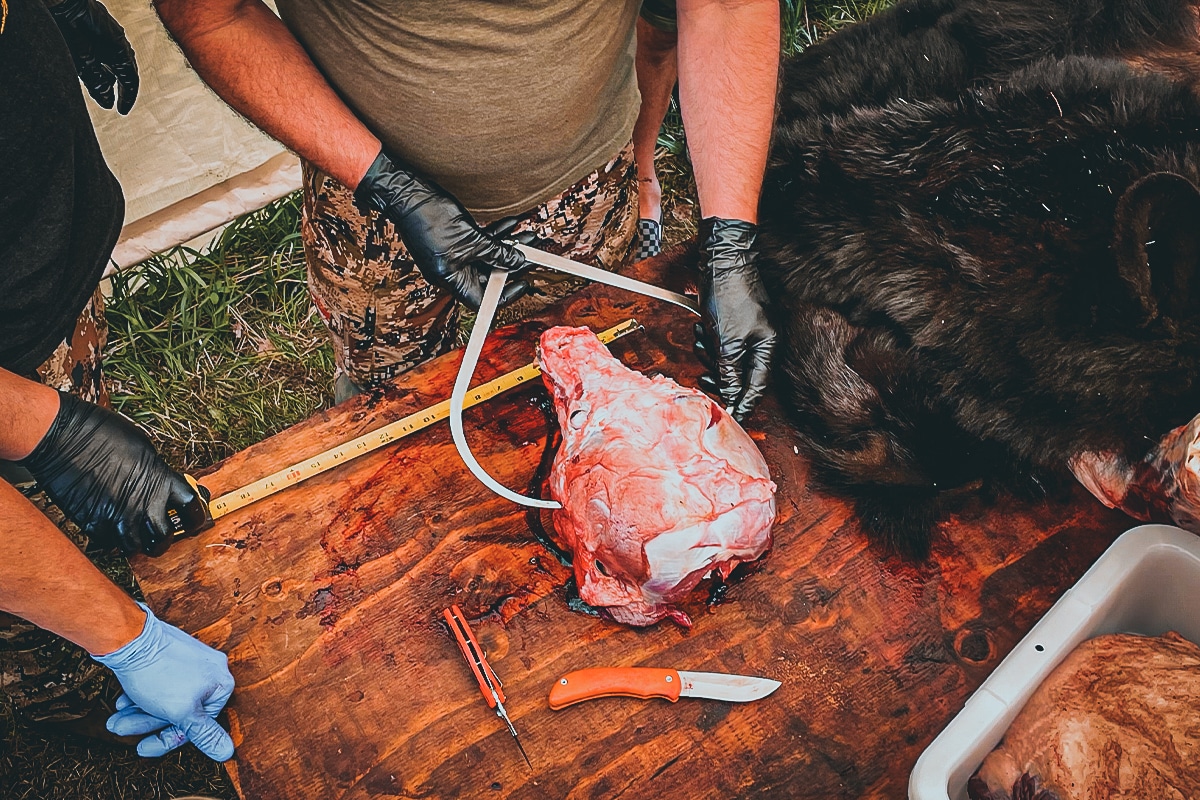
“We try to shoot an average of 7 feet,” he said. “That’s a great bear — 4 or 5 years old. We’ve killed them over 8 feet, which is a different animal. We’ve got a couple that we guided [that were] over 22 inches, which is giant for bears. A 21-inch bear is 1 in 10,000. That 22-incher is 1 in 100,000. It’s a special animal.”
The bear was jet black with a scar over its right eye. My guts told me it was an old boar. Until I had proof of twigs and berries, though, I sat with my bow on my lap.
He stood to smell the beaver, facing me, the dead animal at nose height, and I got my proof.
Before I completed the thought — raise your bow — he sank to all fours, turned directly away from me, and disappeared as silently as he had arrived.
There are no givens in hunting. Even with thorough preparation, things are just as likely to not be in your favor once you step off the beaten path.
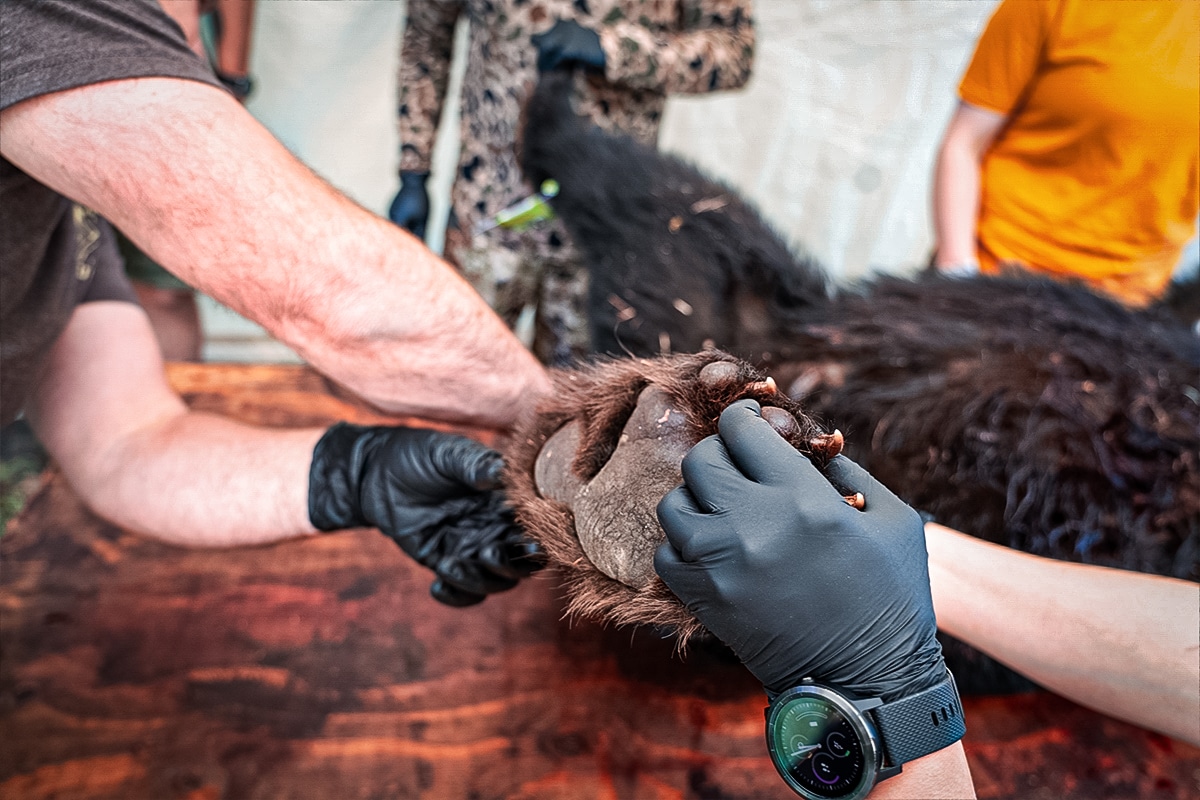
I had spent four days with the Rivets, poring over my gear, processing other hunters’ bears, and participating in the god-awful work that went into each bait site. Every time I sat in a stand, my attention was on ultra-high alert.
I watched a sow and her three cubs on two separate evenings as she treed the fat babies and ate in relative peace. I studied several young boars who fed on oats for hours. I spoke to a young sow that started climbing an adjacent tree to check me out like I would speak to my kids if they were misbehaving. “That’s enough. Go on. Get down.”
Even with the fortune of a giant bear standing perfectly broadside a mere 12 yards from me on my last evening, there was nothing lazy or unethical about any of those moments.
I didn’t fill my tags. No skin, skull, or backstraps came home with me in a cooler. But I did leave with profound respect for the animal — and an appreciation for the value and purpose that baiting serves.
READ NEXT – The Bear: Hunting Ursa Major in the Idaho Wilderness



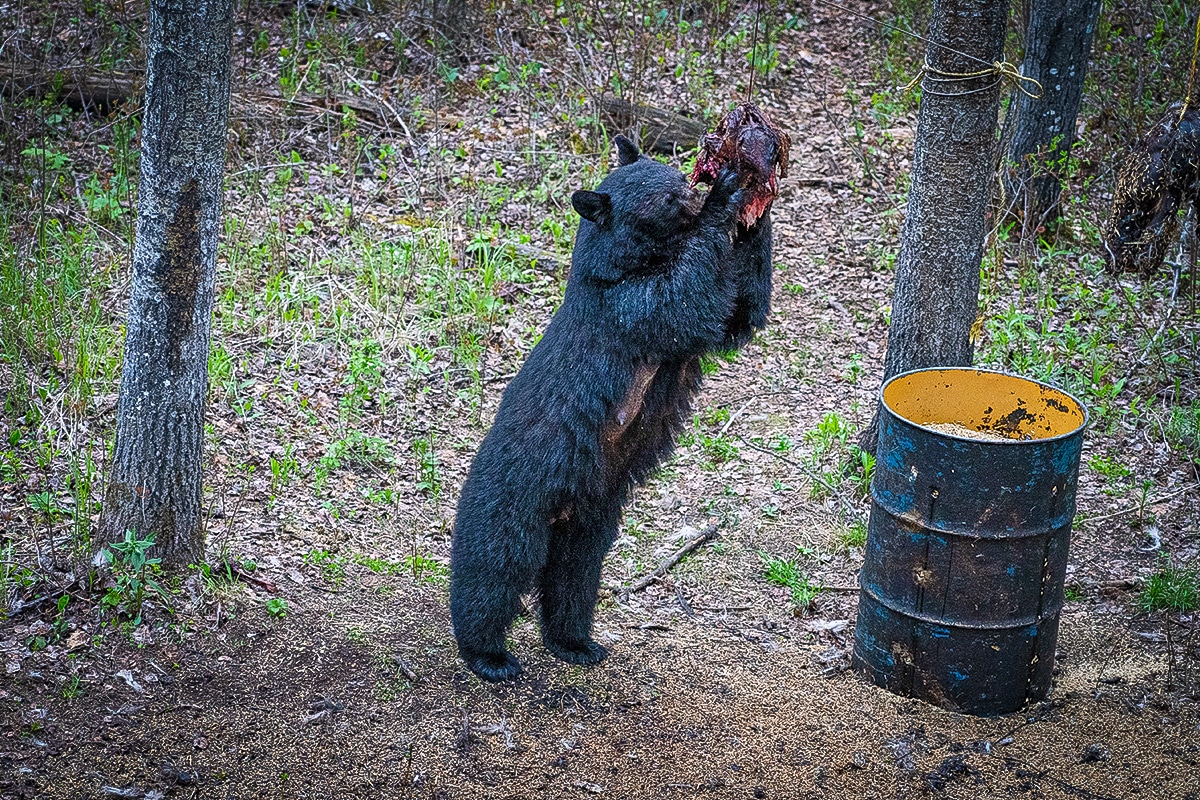

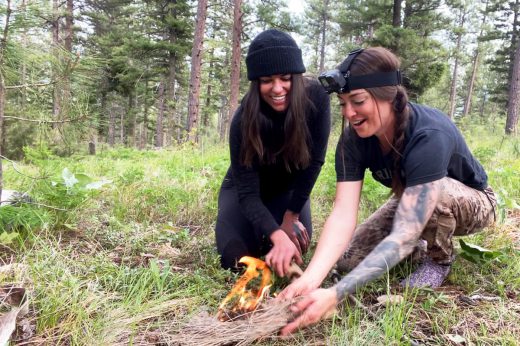

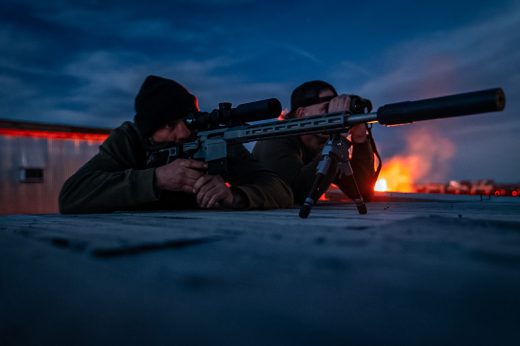


Comments